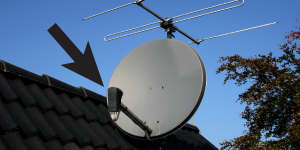|
Wave propagation is the passage of wave energy from one location to another. As waves propagate, they can change amplitude, direction, or wavelength, depending on the kind of wave and the material through which it travels. Wavefronts are extended wave crests, such as ripples on a pond. Waves always travel at right angles to wavefronts. Waves can be reflected, refracted, diffracted, or absorbed at a boundary or when encountering an obstacle. Absorption can rob a wave of its energy, but a wave’s amplitude can also decrease simply because the wave is spreading out over an ever-larger area (as when ripples spread from a pebble dropped into water). 
|
|
crest, trough, wavefront, reflection, concave, convex, refraction, diffraction, absorption
|
Review problems and questions |
|
- Define the following as one of the wave–boundary interactions, using reflection, refraction, absorption, and diffraction each once.
- Tarmac heats up on a sunny day.
- A magnifying glass enlarges an image.
- Waves curve around a boulder in the water.
- A shout echoes off of a building.

 |
- Absorption: The light waves transfer energy to the tarmac and heat it.
- Refraction: Light waves passing through the magnifying glass are bent and change direction.
- Diffraction: The water waves diffract around the obstacle and affect water on the opposite side of the boulder.
- Reflection: The sound waves bounce off the building.

|
- How is it that you can hear people inside another room even when the door is only opened very slightly?

 |
When the sound waves exit through the crack in the door, they diffract, allowing them to bend and spread out around the crack. 
|
- A dozen classmates line up shoulder to shoulder, hold hands, and walk forward at a steady pace. They walk on pavement, but then three students at the left hit mud and slow down. The other students keep going forward and the line bends toward the muddy field. What wave-propagation effect does this imitate, and why?


|
The scenario resembles refraction. The line of friends resembles a wavefront, and part of the wavefront slows down when it encounters the boundary between pavement and mud. Furthermore, the wavefront bends as a result. 
|
- Waves passing from a slow medium into a faster medium undergo refraction.
- Does the frequency of the waves increase, decrease, or remain the same?
- Does the wavelength of the waves increase, decrease, or remain the same?


|
- The frequency remains the same.
- The wavelength increases.

- The horizontal distance from one crest to the next crest of a water wave is the wavelength of the wave. The vertical distance from crest to trough of a water wave is equal to
- the amplitude.
- half the wavelength.
- twice the amplitude .
- twice the wavelength.


|
The answer is c, twice the amplitude. 
|

- This satellite TV dish reflects radio signals that arrive in parallel wave fronts from a great distance. To provide good reception, it must bring those wavefronts to a focus at the position of the arrowed antenna. Is the side of the dish seen here convex, or is it concave?


|
The visible side of the reflective “dish” is concave. Curved reflective boundaries cause waves either to converge or diverge. A concave boundary reflects parallel wavefronts to a common focal point. A convex reflector, by contrast, causes such waves to diverge. 
|
Take a Quiz |
|
| |
|

